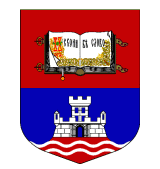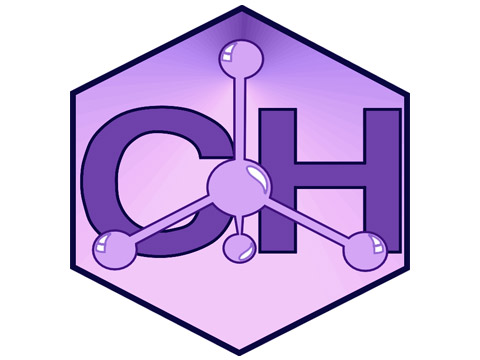Organic instrumental analysis
- Vlatka Vajs, Full Research Professor
- Ivana Aljančić, Full Research Professor
- Nina Todorović, Full Research Professor
- Dejan Gođevac, Associate Research Professor
- Milka Jadranin, Associate Research Professor
- Miroslav Novaković, Assistant Research Professor
- Mirjana Cvetković, Research Assistant
- Jovana Stanković, Research Assistant
- Dejan Vućetić, Senior Technical Associate
- Prof Emeritus Slobodan Milosavljević, SASA member
- Prof Vele Tešević, Associate Professor
- Snežana Trifunović, Associate Research Professor
- Ivan Vućković, Assistant Professor
- Ljubodrag Vujisić, Assistant Professor
- Boris Mandić, Assistant
- Gordana Krstić, Assistant
- Boban Anđelković, Technical Associate
- Marina Todosijević, Technical Associate
Center for Instrumental Analysis (CIA) is unique in this part of Europe in terms of equipment and staff, with NMR, MS, IR, UV-vis, GC and LC instruments, and equipment for elemental analysis.
Researchers at CIA analyze, identify, and characterize organic compounds and mixtures.
Our research focuses on bioactive natural products isolates from wild, cultivated, or edible plants. We have isolated and identified a number of bioactive secondary metabolites including flavones, xanthones, triterpenes, lactones, alkaloids, and saponins. Chromatographic techniques are used for isolating the compounds, which are characterized with modern spectroscopic methods (IR, NMR, LC/DAD/MS, GC/MS, UV, and 2D NMR methods: COSY, NOESY, TOSCY, HMBC, HMQC) and tandem mass spectrometry.
In addition to research and teaching, we cooperate with other institutions and industry (Ministry of Internal Affairs, Medicines and Medical Devices Agency of Serbia, Hemofarm, Galenika) on analyzing a variety of samples (e.g. raw plant extracts, illicit drugs, falsified medicines, green coffee, chemical weapons, kidney stones).
The expertise of organic instrumental analysis laboratory was confirmed at proficiency test for competence of laboratories analyzing chemical weapons, organized by the Organisation for the Prohibition of Chemical Weapons (OPCW) with headquarters in Hague. This very complex and hard test serves the purpose of Organisation so that member countries would find competent laboratories that are able to reliably analyze toxic substances, which is of grave importance especially in a case of potential usage of chemical weapons that calls for quick response.
International cooperation
- Slobodan Macura, Mayo Clinic, Rochester, SAD,
- Harri Koskela, Verifin Institute, Helsinki, Finland
- Young Hae Choi, Natural Products Laboratory, Institute of Biology, Leiden University
Inorganic instrumental analysis
- Biljana Dojčinović, Associate Research Professor
- Marija Pergal, Assistant Research Professor
- Prof Dragan Manojlović, Full Professor
- Dalibor Stanković, Assistant Research Professor
Research in inorganic instrumental analysis in the Department of Chemistry is a continuation long-term efforts of ICTM's researchers. Research in this area is conducted in cooperation with Faculty of Chemistry – University of Belgrade and ICTM's own Department of catalysis and chemical engineering and Department of microelectronic technologies.
Key research areas:
1) Qualitative and quantitative analysis of micro and macroelements
Our primary field of research is optimization, correction for interferences, and application of ICP-OES and ICP-MS analytical techniques along with improving sample preparation, in order to achieve characterization and monitoring of concentrations of metals, nonmetals and metalloids in biological and synthetic samples.
- Samples: water, food, dietary supplements, biological and medical, pharmaceutical, deposits, soil, sediments, nanomaterials, geological samples, petrochemical, catalysts, polymers, etc.
- Ultra trace elements in: water, food, biological, and medical oncology samples, environmental samples, nanoparticles, catalysts, sorbents, alloys, petrochemical samples, ceramics, soils, plastics, composite materials, etc.
- ICP techniques allow simultaneous, rapid, multi-element qualitative and quantitative analysis for over 70 elements
- Macro and microelements: heavy, noble, and other metals, metalloids and nonmetals.
- Lower limits of detection: 0,01 - 1 μg/L (ICP-OES) and 0,001 -0,01 μg/L (ICP-MS)
- Introduction of liquid samples: directly, by generating hydrides (for As, Hg, Pb, Se Ge, Sn, Bi, and Te), by dissolving in HF (silicate samples) or organic solvents
2) Removal and speciation of arsenic compounds
Removal (sorption) of arsenic compounds from synthetic and real-world samples of underground waters is a special sub-area of Department’s research. Research includes optimizing conditions for improving removal efficiency of arsenic inorganic and organic compounds, regeneration of sorbents and synthesis of new sorption materials. Removal efficiency is monitored by HPLC-ICP-MS and electrochemically, using differential pulse voltammetry with standard and modified electrodes.
3) Waste water treatment using advanced oxidation processes (AOP)
- Low-temperature plasma treatments based on Dielectric Barrier Discharge with water falling film (DBD)
- Photocatalysis (homogenous and heterogenous)
- Electrochemical oxidation (commercial and modified electrodes)
- Fenton’s reagen
- Photo-Fenton processes
- Photolysis
- Ozonolysis
Research focuses on analysis of model compounds from different classes of organic pollutants, including textile dyes, phenol, chlorophenols, pesticides, surfactants (detergents), nicotine, and ibuprofen. Degradation efficiency is monitored using modern chromatographic techniques and ecotoxicological assays on model organisms (Artemia salina, Daphnia magna).
4) Electrochemical (oxido-reductive) characterization and determination of:
- Bioactive compounds in blood, urine, plants, drugs, etc.
- Anti-oxidative activity in food samples, plant products, dietary supplements, etc.
6) Polymeric materials
This field of research includes synthesis, characterization, and analysis of structure and properties of polymeric materials, with the following sub-areas:
- synthesis, characterization, and application of poly(siloxane)-based organic polymers
- synthesis, characterization, and application of branching polymers based on poly(dimethylsiloxane) and hyperbranched polyester
- optimization of conditions for synthetizing polymers and polymeric nanocomposites and research in polymer modification procedures
- analysis of polymer biocompatibility
- analysis of thermal, surface, thermomechanical, mechanical and morphological properties of polymeric materials

